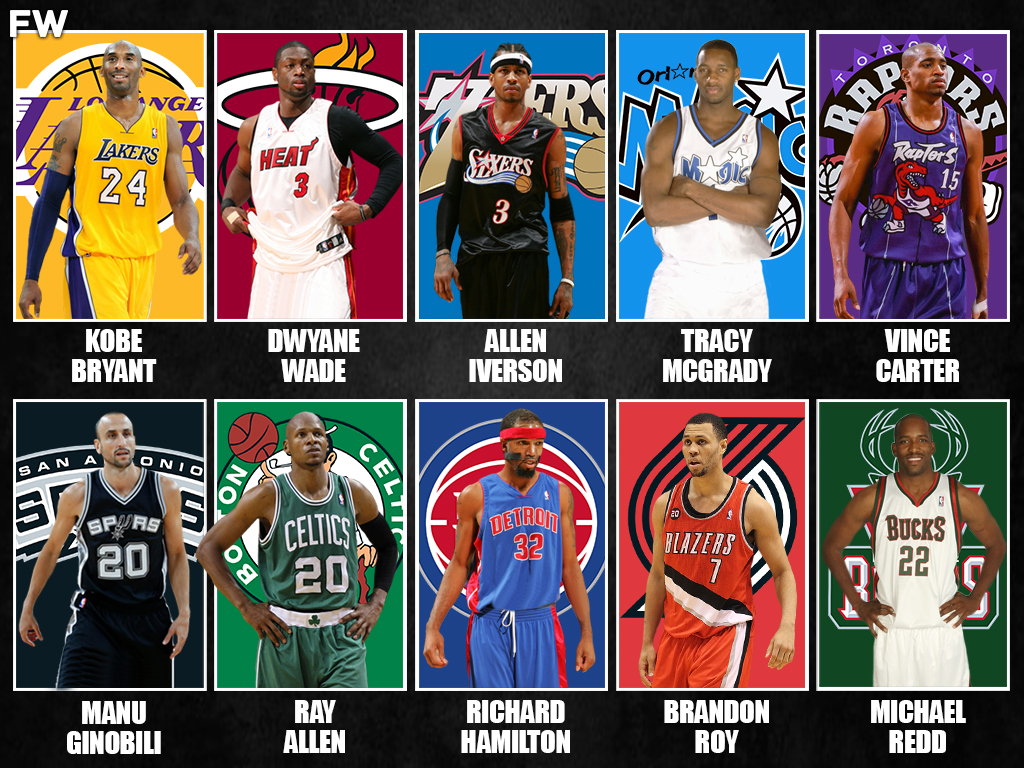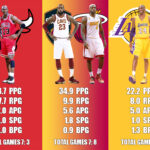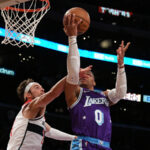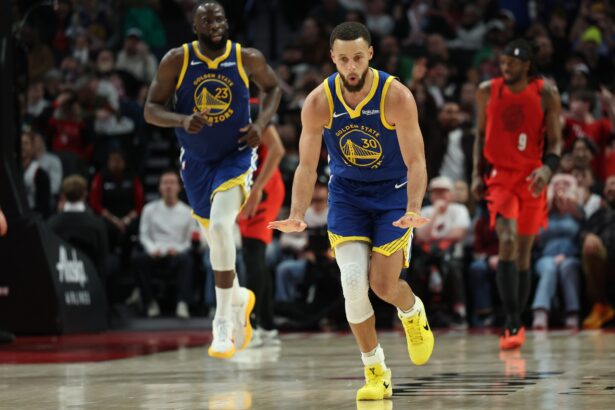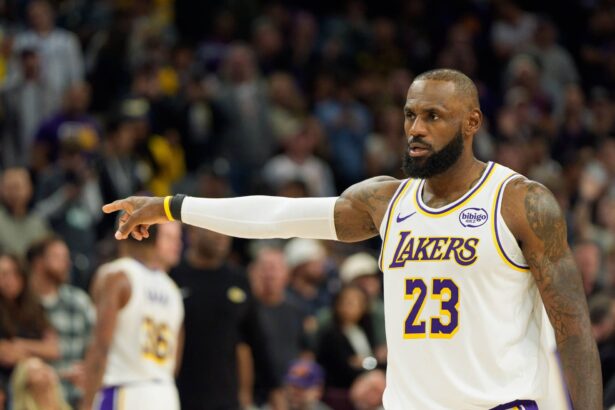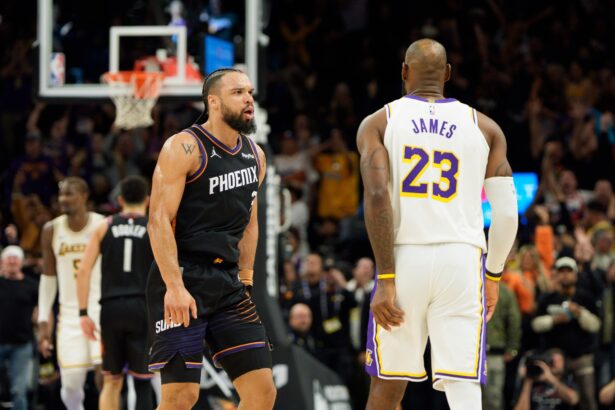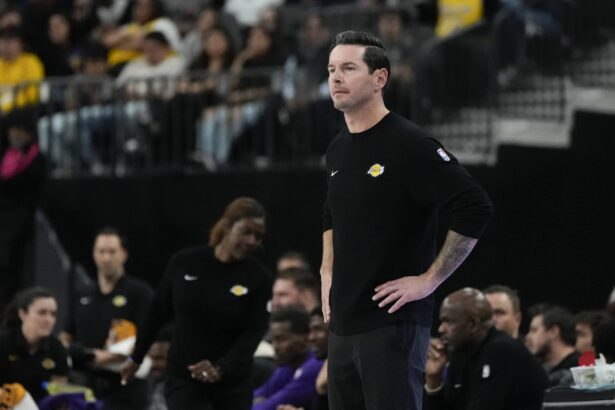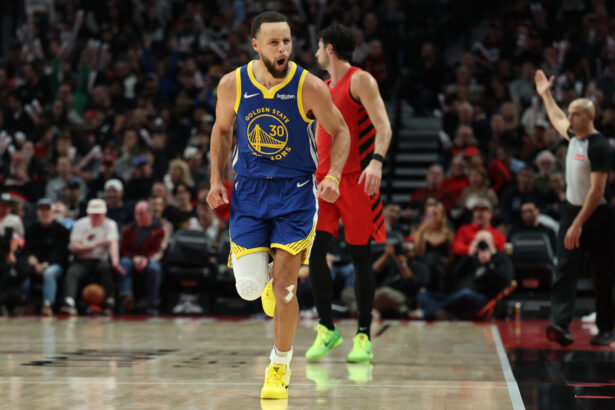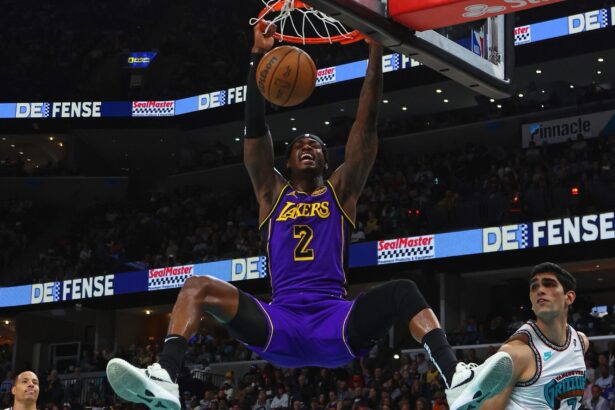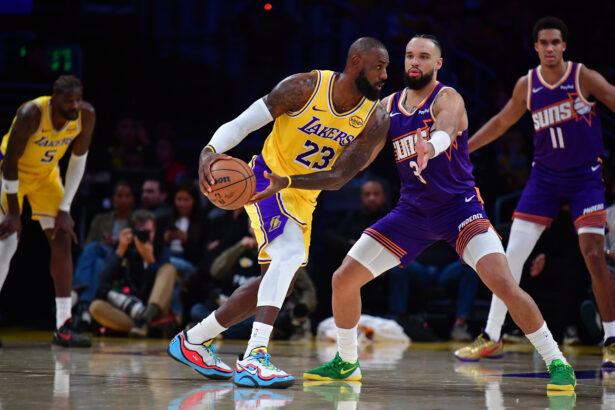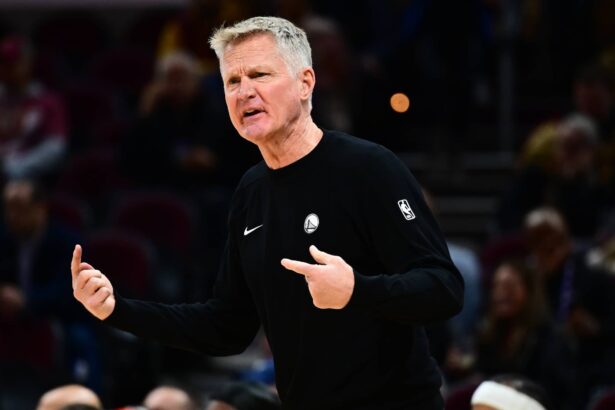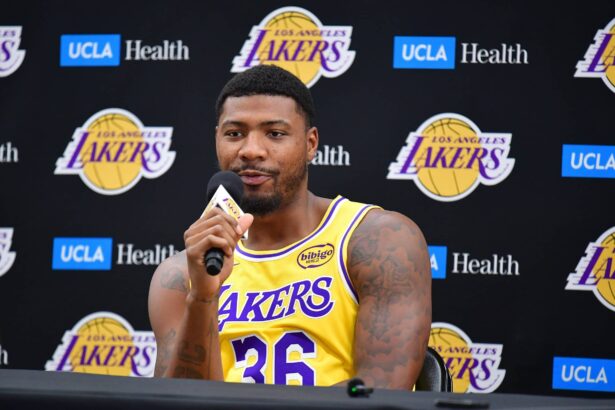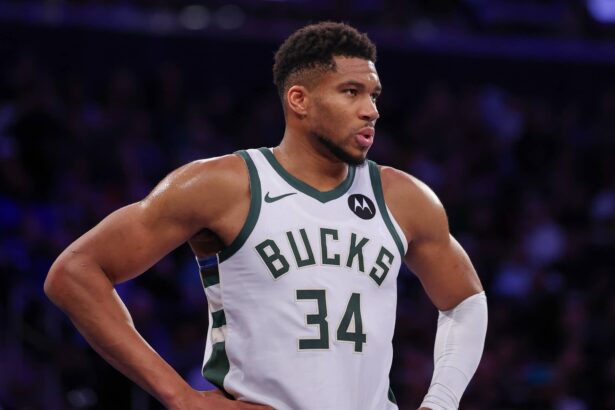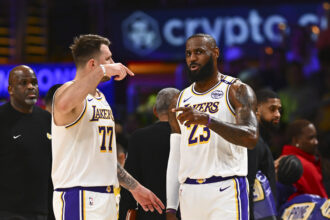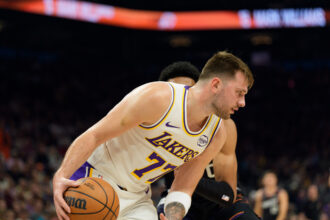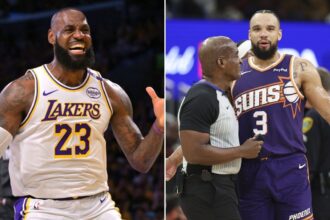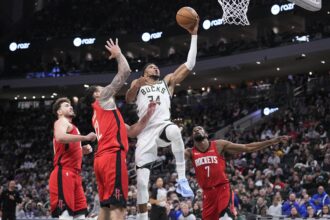The first decade of the 21st century featured the deepest group of shooting guards in the NBA’s history. Players like Kobe Bryant, Dwayne Wade, and Tracy McGrady grew up watching Michael Jordan take over the association during the 80s and 90s, winning six titles, a myriad of accolades, and worldwide fame. The league’s new breed of 2’s put MJ’s fadeaway jumper and impeccable post footwork into their bag, added their own blend of explosive moves, and bombarded the NBA.
- 10. Michael Redd
- 9. Brandon Roy
- 8. Richard Hamilton
- 7. Ray Allen
- 6. Manu Ginobili
- 5. Vince Carter
- 4. Tracy McGrady
- 3. Allen Iverson
- 2. Dwyane Wade
- 1. Kobe Bryant
- 2000 Through 2010 Was The Age Of The Shooting Guard
- Next
- The Last 40 Scoring Champions: Michael Jordan Is The Best Scorer In NBA History
- Kobe Bryant’s Points Per Game For Each Season: Black Mamba Was Unstoppable In His Prime
- Allen Iverson’s Points Per Game For Each Season: The Answer Was A Scoring Machine
- 2002-03 NBA Scoring Leaders: Tracy McGrady Won The Scoring Title Against Kobe Bryant, Allen Iverson And Shaquille O’Neal
- Ranking The NBA’s Top 75 By Tiers: There Is Only One GOAT
Our group of shooting guards never reached MJ’s heights on the court or renown off it, but a few of them came close. The 2’s in our rankings helped their organizations win all ten championships between the 2000-01 and 2009-10 seasons while picking up countless All-NBA selections and All-Star bids. The turn of the century truly was the time of the shooting guard.
Below, we’ll rank the ten best shooting guards from 2000 through 2010.
10. Michael Redd
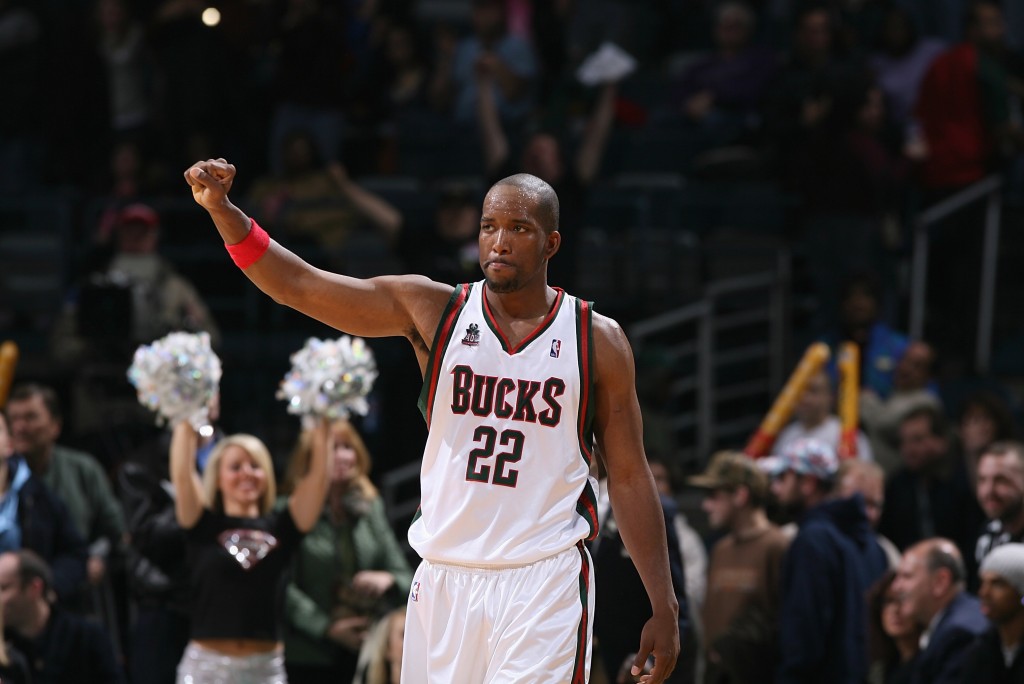
2000-01 to 2009-10 Accolades:
1x All-NBA Third Team
1x All-Star
Michael Redd made only one All-Star game throughout his career during the 2003-04 season (he averaged 21.7 PPG, 5.0 RPG, and 2.3 APG), which undersold his value as a shooting guard and was a borderline crime during his two best seasons.
Have a look at his two best non-All-Star years:
2005-06: 25.4 PPG, 4.3 RPG, 2.9 APG, 1.2 SPG, 39.5 3P%
2006-07: 26.7 PPG, 3.7 RPG, 2.3 APG, 1.2 APG, 38.2 3P%
In today’s NBA, it’s nearly unimaginable for a player to put up those types of shooting numbers and not be recognized as a maxed-out All-Star. Unfortunately for Redd, he spent his entire prime toiling away in small-market Milwaukee before NBA fans had access to NBA League Pass. It also didn’t help that he was competing for a spot in the mid-season classic against all-time greats Allen Iverson, Dwyane Wade, and Vince Carter, along with Gilbert Arenas and Joe Johnson.
Redd blended one of the smoothest three-point jumpers in league history with a solid off-the-dribble mid-range game. He was also a high-level man-on-man defender, routinely taking on the opposing squad’s best offensive wing.
Michael Redd suffered two torn ACL injuries in his late 20s, hampering his ability to play. He retired at age 32 after only 12 years in the association. Still, he averaged 19.0 points per game on 38.0% from deep while pulling down 3.8 RPG and dishing out 2.1 APG throughout his career, numbers that are good enough to land him in our rankings.
9. Brandon Roy
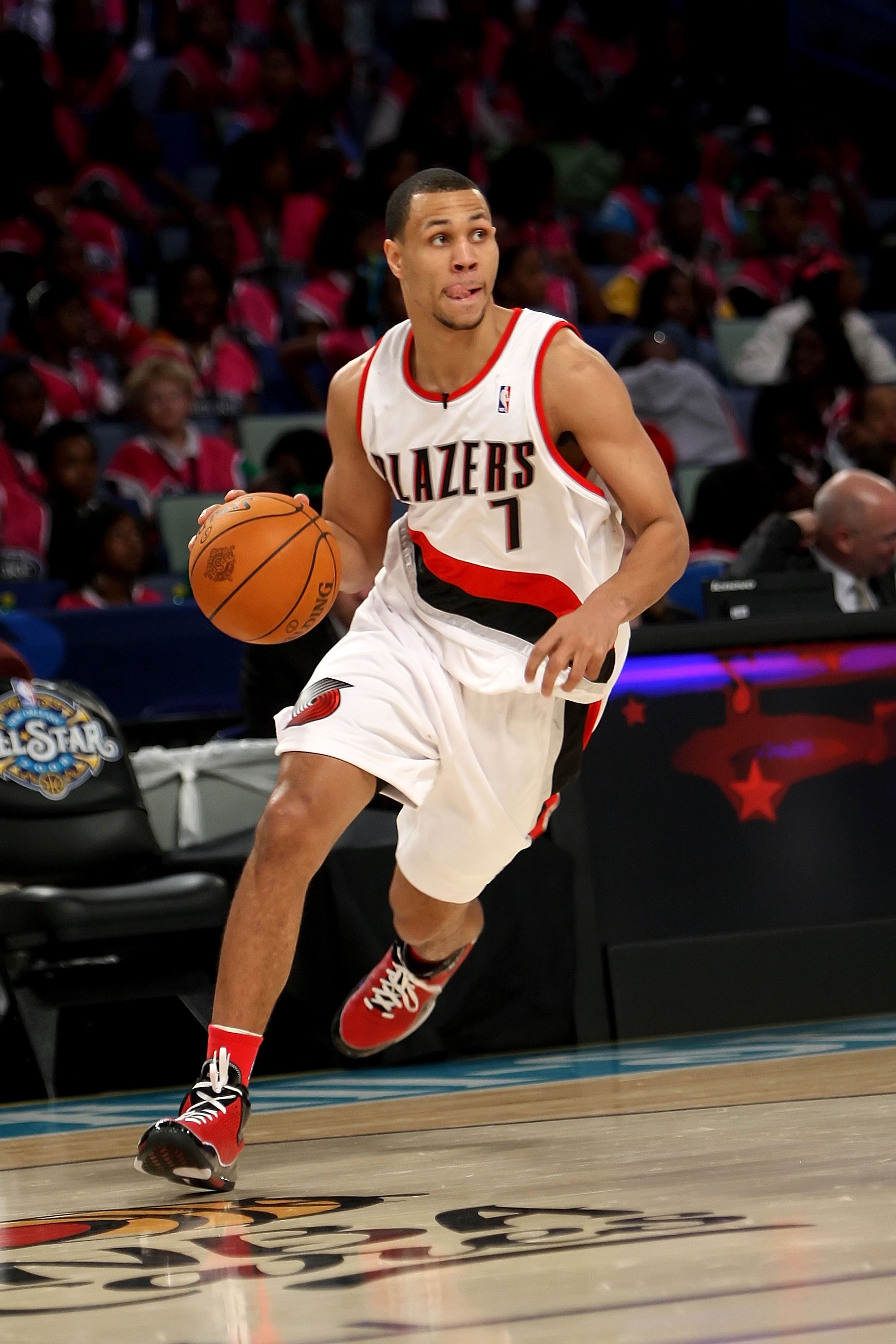
2000-01 to 2009-10 Accolades:
Rookie of the Year
1x All-NBA Second Team
1x All-NBA Third Team
3x All-Star
Brandon Roy, 23, made his first All-Star game during his second season in the league. Five years later, he was out of the association in one of the saddest stories in the NBA’s long history. Roy suffered from a bone-on-bone knee condition which left him unable to play basketball at the highest level and would have hobbled him for life if he’d continued to suit up.
While Roy played, he was remarkable. He blended top-10 playmaking skills with an incredible burst to the rim, helping propel his once dismal Portland Trail Blazers up the standings and into the playoffs in 2009 and 2010. Overall, Brandon Roy averaged 18.8 PPG, 4.3 RPG, and 4.7 APG throughout his six NBA seasons.
Going past the numbers, Brandon Roy was also one of the most ferocious competitors of his time, a player who craved the ball during the final pressure-packed moments of a game. He was a mini Kobe Bryant before his balky knees pushed him into early retirement.
8. Richard Hamilton
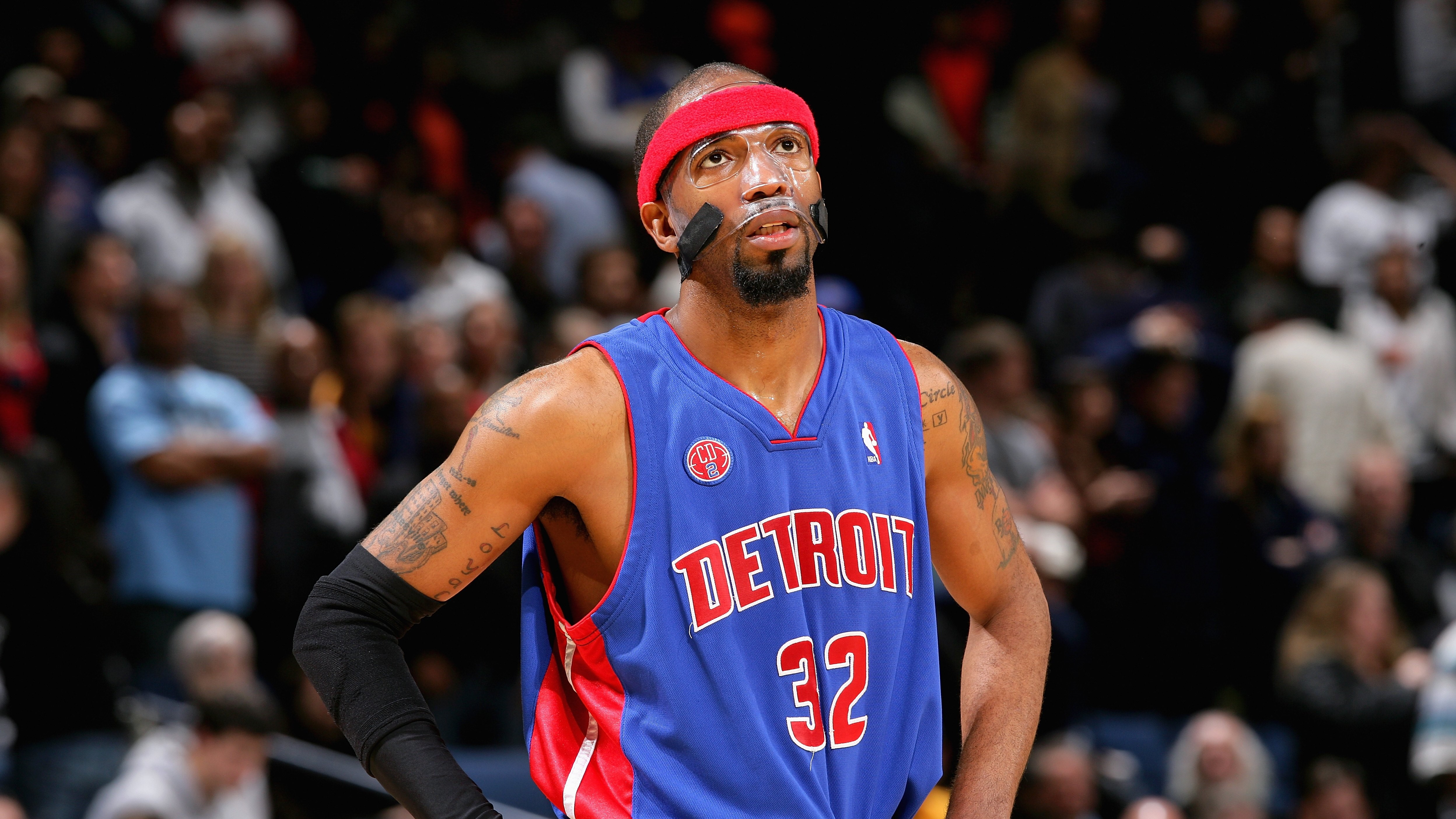
2000-01 to 2009-10 Accolades:
1x NBA Champion
3x All-Star
Richard Hamilton was the best shooter coming off a screen during the turn of the 21st century and top-5 all-time. Rip Hamilton didn’t wrack up a pile of All-NBA nods or All-Star berths like many of the other players on our list, and he only averaged 20 points or more per game for an entire season twice in his career. Still, Hamilton had a huge offensive impact for his squad by running his defenders ragged whenever he was on the court.
Rip was the best-conditioned athlete of his time. He’d step on the court before tipoff, and you could almost see his defender crack his neck with a sigh, mentally preparing for the war Hamilton was about to inflict on his legs and lungs. While many of today’s starting guards (Russell Westbrook) stand around the perimeter when they’re not directly involved in the play, Rip was a ball of energy who never stopped moving. He’d run whoever was covering him around three screens in under five seconds, back-cut toward the rim, sucking in another defender before sprinting out to the three-point line helping create havoc and open looks for his teammates without ever touching the rock.
When Hamilton got his hands on the ball, he had a lightning-quick release he could get off with only a slither of space. He was also an expert at turning in the air, squaring his shoulders toward the basket, and nailing a mid-range jumper.
Overall, Richard Hamilton averaged roughly 18.5 PPG during his prime off mostly contested looks from the key out to the arc. He made three All-Star teams and was instrumental in the Detroit Pistons 2004 title over the heavily favored Los Angeles Lakers.
7. Ray Allen
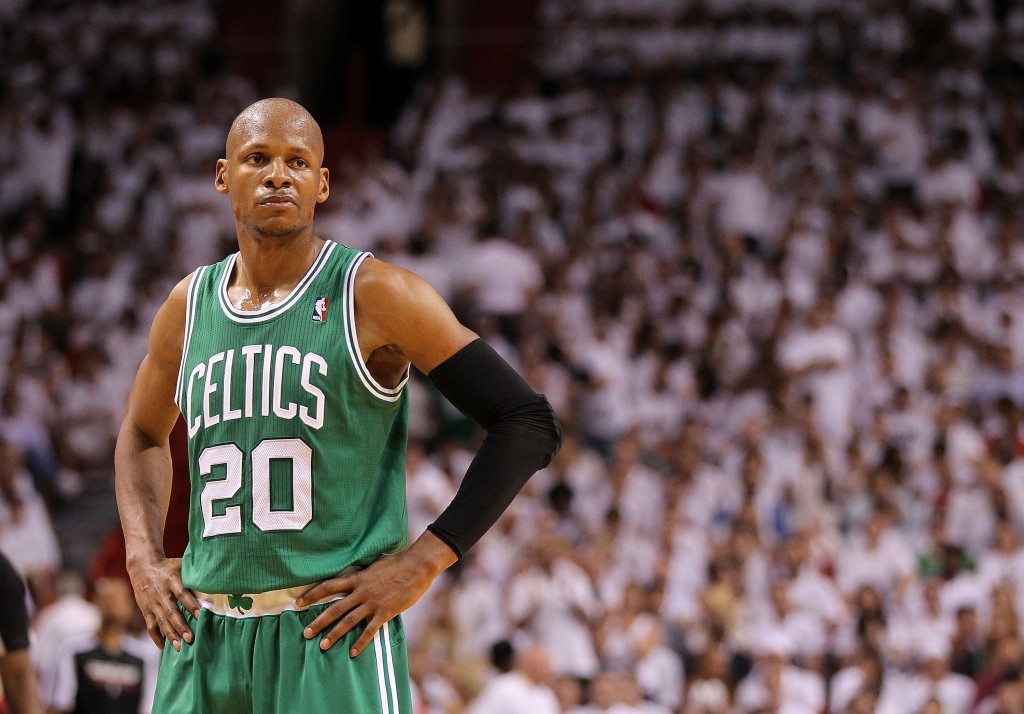
2000-01 to 2009-10 Accolades:
1x NBA Champion
1x All-NBA Second Team
1x All-NBA Third Team
8x All-Star
Ray Allen is one of the best three-point shooters in the NBA’s history. He’s second all-time in three-point makes at 2,973, and he managed to keep his long-distance percentage above 40% for his career, a remarkable feat considering the volume of beyond-the-arc bombs he took throughout his 17-year career.
Allen was much more than a three-point specialist. People tend to forget that he was a hell of an athlete. During Allen’s prime in Milwaukee and Seattle, he combined a deadly crossover game with a quick-burst first step to blow by his defender, and when Allen got into the lane, he could finish at the rack or loft a soft floater over an opposing big man. Jesus Shuttlesworth also had a solid mid-range game. He had no problem pump faking from deep, waiting patiently as his defender sailed by, and stepping inside the arc for a long two. Allen shot a deadly 43.4 from 16 feet to the three-point line during his career, one of the best marks ever.
Throughout the first decade of the 21st century, Ray Allen was voted onto the All-Star team eight times and made a couple All-NBA teams. Most importantly, he was a crucial cog in the Boston Celtics championship run in 2008, helping spread the floor for Kevin Garnett and Paul Pierce while providing secondary playmaking and supplying upper-tier man-on-man defense. Ray Allen finished his career with an impressive stat line of 18.9 PPG, 4.1 RPG, and 3.4 APG.
6. Manu Ginobili
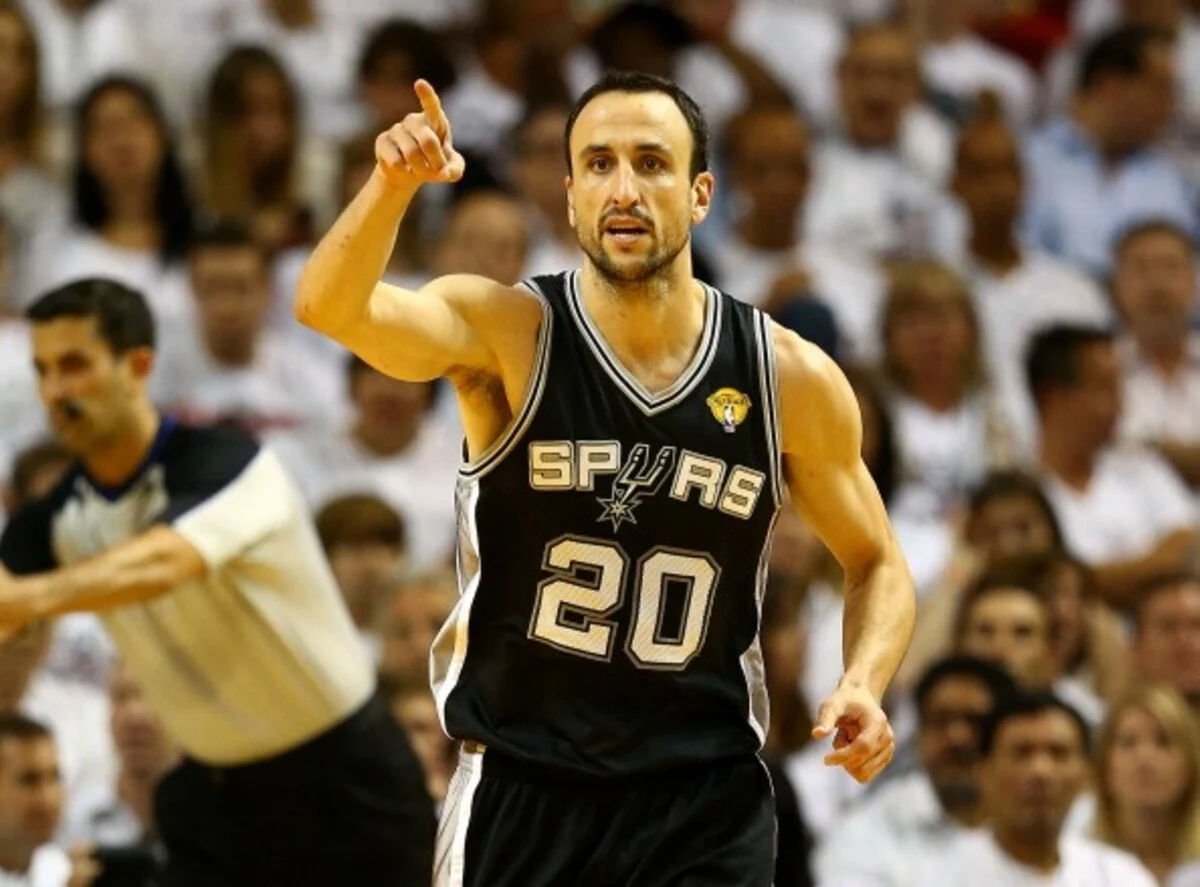
2000-01 to 2009-10 Accolades:
3x NBA Champion
1x All-NBA Third Team
1x Sixth Man of the Year
Manu Ginobili doesn’t own the type of individual accolades that Ray Allen racked up during his long career. Still, Ginobili lands one spot higher than Shuttlesworth because he sacrificed his numbers, worldwide fame, and a whole lot of cash, all to win championships as the Spurs’ sixth man.
Manu Ginobili spent nearly his entire career coming off the bench for Gregg Popovich in San Antonio, but we have an excellent illustration of the type of damage he was capable of as a starting shooting guard. During the 2004-05 season, Pop finally unleashed Ginobili on the league as a starter next to Tim Duncan and Tony Parker. Manu averaged 16.0 PPG, 4.4 RPG, 3.9 APG, and 37.6% from deep during the regular season while playing some of the best perimeter defense in the last 20 years. Ginobili was selected for his first All-Star game (he made his only other All-Star team in 2011 when he was again inserted into the starting lineup for an entire season), and he amassed a ridiculous array of advanced stats. He finished the season with a 117 offensive rating and 98 defensive rating, good for a +19 net rating, 7 points higher than the regular season MVP, Steve Nash. Manu was also worth 11.0 win shares (again higher than MVP Nash), and overall the Spurs were +16.6 points per 100 possessions with Ginobili on the court.
Manu dominated the 2004-05 playoffs, forming an incredible twosome with Tim Duncan, averaging 20.8 PPG, 5.8 RPG, and 4.2 APG, claiming one of his three chips during the ten years between 2000 through 2010. Manu ended his career with four titles and the appreciation of every NBA fan in Southern Texas. While many of Ginibili’s peers have been selected to the Hall-of-Fame, he’s on the outside looking in, a great injustice to a player who could have chased glory on another team, but chose to stay loyal to Pop and the Spurs for his entire career.
5. Vince Carter
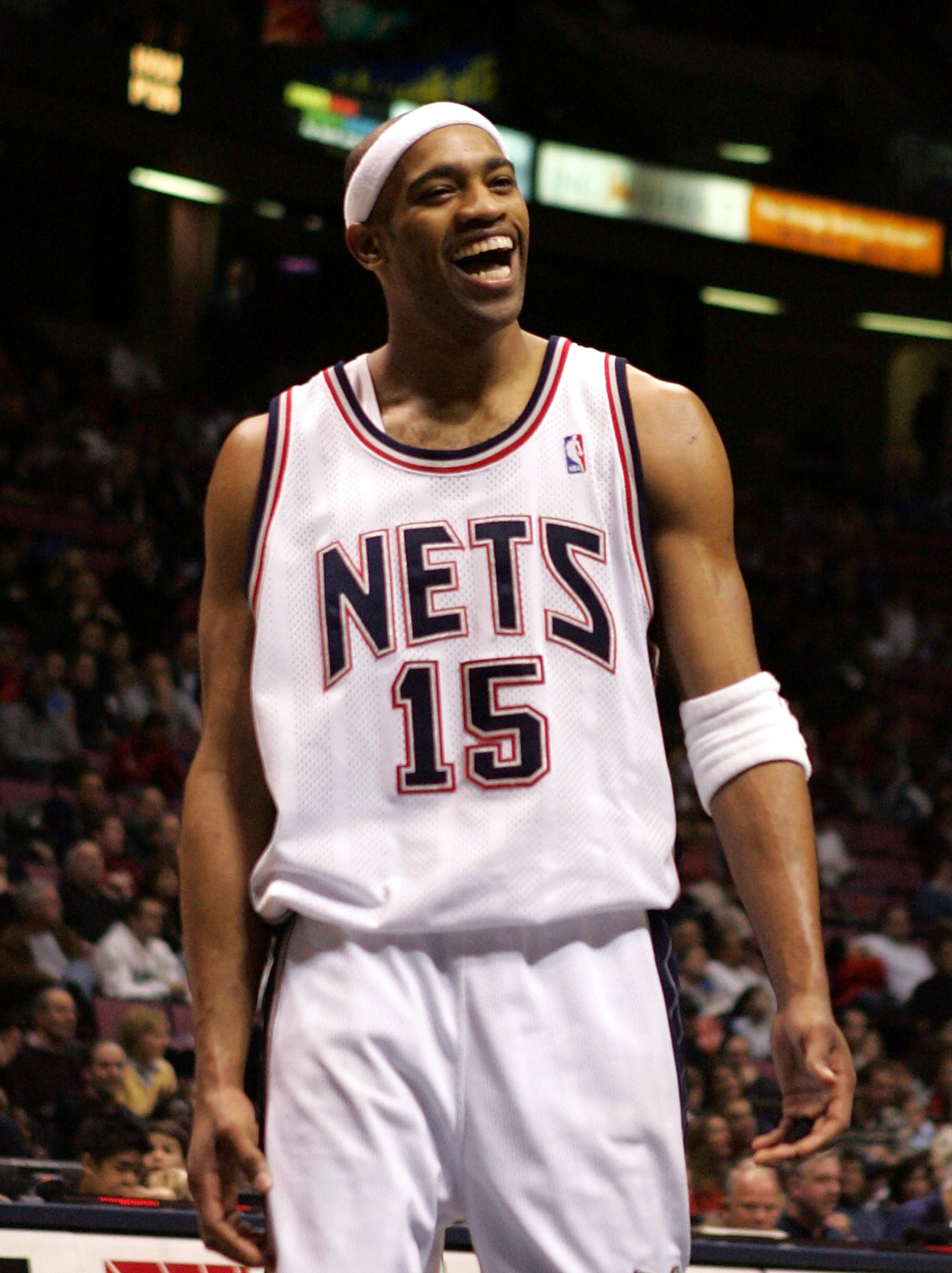
2000-01 to 2009-10 Accolades:
1x All-NBA Second Team
7x All-Star
You know about Vince Carter’s talents in the lane. In the 2000 dunk contest, he destroyed the rim and was a 360 degrees-slamming-tomahawk-jamming-hit-his-head-on-the-rim athlete who menaced the entire league with his incredible athleticism.
Carter was also a surprisingly good outside shooter. During his second season in the league, he shot 40.3% from deep and continued to thrive as an inside-out shooting guard, hitting 40.8% of his three-point attempts in his third year in the league, and 38.7% from beyond the arc in his fourth season. Overall, he connected on a 37.1% clip from three-point range for his career.
Perhaps no player in league history combined the type of outside shooting touch, explosion to the rim, and playmaking of an in-his-prime Vince Carter. He was death on the court, an unstoppable force who never won a title but clearly didn’t have the type of big man talent by his side that Kobe Bryant (Shaq), Ray Allen (Garnett), or Manu Ginobili (Duncan) were lucky enough to partner up with.
The 2005-06 postseason provides us a perfect example of the postseason odds Vince Carter continually found himself up against. Vinsanity was teamed up with Jason Kidd on the New Jersey Nets, forming a solid backcourt duo, but Jason Collins was their starting center. No disrespect to Collins, he was a reliable big man, but despite Carter dropping 29.6 PPG, 7.0 RPG, and 5.3 APG throughout 06 playoffs, the Nets got steamrolled in the Eastern Conference Semifinals as Shaq ruined Collin’s life on the block.
That was Vince Carter’s story from 2000 through 2010. He was a seven-time All-Star who took over the league with his excellent all-around offensive repertoire but could never climb to the top of the mountain, losing to deeper teams in the playoffs with better big men. Carter averaged roughly 25.0 PPG, 5 RPG, 4 APG, and 38.0 3P% throughout his prime, some of the best-extended numbers in the league’s history.
4. Tracy McGrady

2000-01 to 2009-10 Accolades:
2x NBA Scoring Leader
2x All-NBA First Team
3x All-NBA Second Team
2x All-NBA Third Team
1x Most Improved Player
7x All-Star
Tracy McGrady didn’t have the type of protracted success of Vince Carter, Ray Allen, or Manu Ginobili, but he burned hotter for a five-year stretch than any other player in the league from 2001 through 2006.
Tracy McGrady won back-to-back scoring titles in 2002 and 2003, averaging 32.1 PPG, 6.5 RPG, 5.5 APG, 1.7 SPG, and 38.6 3P%, then 28.0 PPG, 6.0 RPG, 5.5 APG, 1.4 SPG, and 33.9 3P% respectively. T-Mac had the fattest bag of tricks the league had seen since Michael Jordan. He killed defenders with a sweet left-to-right floating mid-range jumper, a shot so difficult it’s disappeared from today’s analytics-driven NBA. He also covered ground like a more agile Giannis, dipping his shoulder past his defender, creating an inch or two of space before blowing by him and two-stepping to the rim where he breathed fire with his nightly highlight dunks.
Kobe Bryant, the premier perimeter defender between 2000 and 2010, famously said, per Dave McMenamin, “Kobe on the toughest guys he ever played against – Iverson, Marbury, Arenas, Melo, Durant – but put Tracy McGrady as the toughest.”
LeBron James didn’t make Kobe’s list, nor did Dwayne Wade or Manu Ginobili. T-Mac was long, athletic, and a ferocious competitor, a player who wanted to break his defender’s soul in half, and he earned Bryant’s respect over a who’s who list of more famous NBA athletes.
T-Mac never made it past the second round of playoffs, and injuries broke him down in his prime. He went from pouring in 24.6 PPG as an All-Star in 2007 to averaging 8.2 points per contest only two seasons later.
Still, he was one of the best players in the world at the turn of the century, making the All-NBA First Team twice, All-NBA Second Team twice, and All-NBA Third Team three times. He was also a seven-time All-Star and a Hall-of-Famer.
3. Allen Iverson
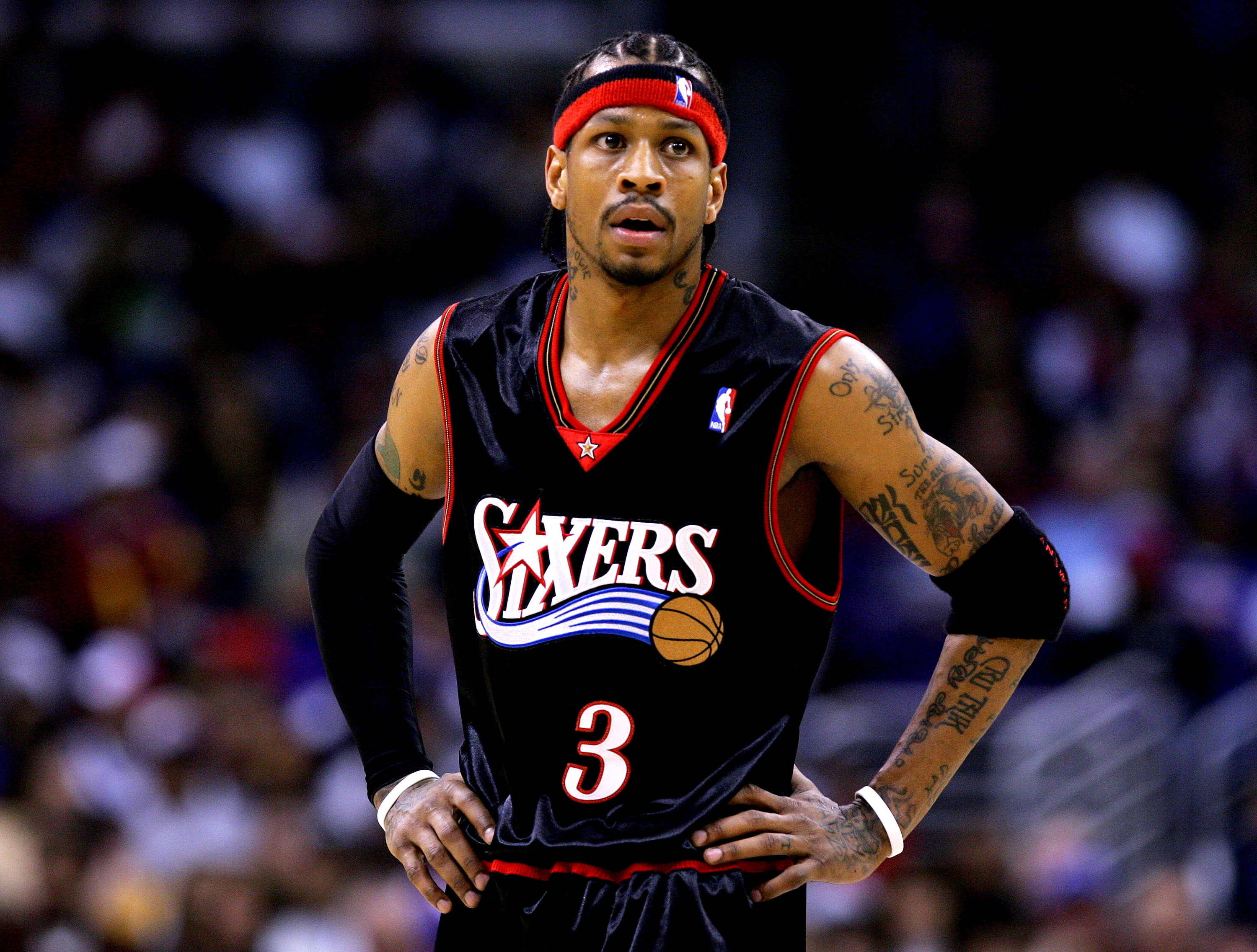
2000-01 to 2009-10 Accolades:
1x NBA MVP
3x NBA Scoring Leader
3x NBA Steals Leader
2x All-NBA First Team
2x All-NBA Second Team
1x All-NBA Third Team
10x All-Star
Allen Iverson was like a snowball rolling downhill, seemingly getting bigger, faster, and deadlier as the game flowed from the first half into the fourth quarter. He broke teams with his incredible conditioning, fearlessness in the lane, and ability to get by multiple defenders who were keyed in on stopping him during crunch time situations.
AI broke the internet before the internet could be broken during the 2000-01 season, averaging 31.1 PPG across 71 contests for the 76ers, nearly 20 points higher than his teammate Theo Ratliff (12.4 PPG), who came in second on Philadelphia in nightly buckets. Iverson destroyed the regular season, blowing it up like a $2.00 cherry bomb, and then dragged the 76ers through the playoffs into the finals, where Shaq and Kobe proved too much for even him to topple.
Ask any Philadelphia 76ers fan what they think about Iverson, and they’ll flash a fat smile, eyes glazing over as they tell you how much they love him. AI played with two hearts, putting his 5-11, 165-pound body on the line every time he careened down the lane among the NBAs trees.
Iverson ended things with one of the best career stat-lines in the NBA’s history, averaging 26.7 PPG, 6.2 APG, and 2.2 SPG. He’s also a Hall-of-Famer, a member of the NBA 75th Anniversary Team, the 2001 regular season MVP, and one of the best shooting guards from 2000-2010.
2. Dwyane Wade
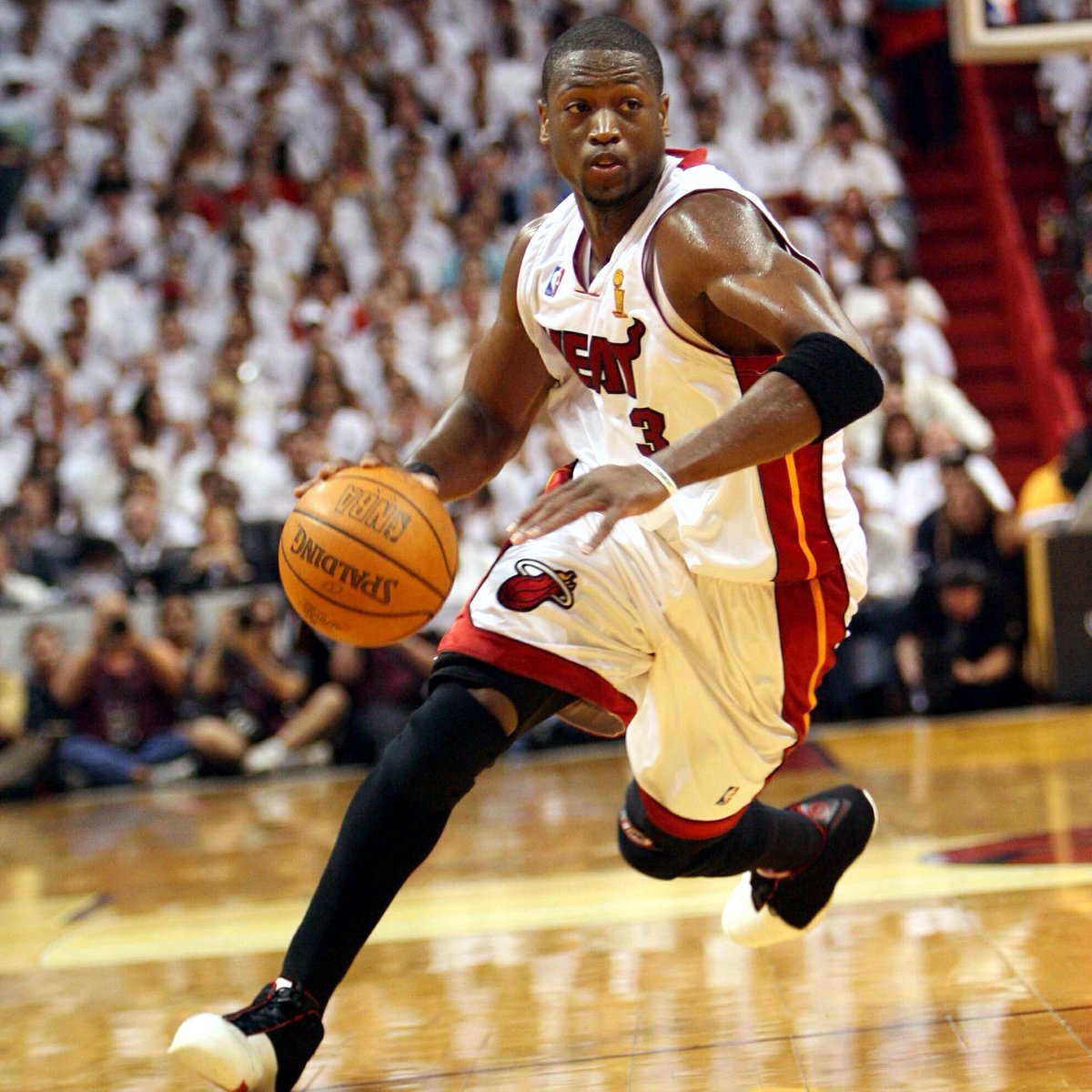
2000-01 to 2009-10 Accolades:
1x NBA Champion
1x Finals MVP
1x Scoring Leader
2x All-NBA First Team
2x All-NBA Second Team
1x All-NBA Third Team
3x All-Defensive Second Team
6x All-Star
Dwyane Wade’s 2000-2010 offensive exploits were impressive, but it was his two-way greatness that lands him second on our list. From 2008 through 2010, Dwayne Wade mixed a blend of scoring and on-ball defense that’s only been rivaled by Michael Jordan, Kobe Bryant, and LeBron James over the last 30 years.
During the 2008-09 season, Wade averaged 30.2 PPG, 7.5 APG, 5.0 RPG, 2.2 SPG, and 1.3 BPG for the Heat as he used an incredible array of off-the-dribble mid-range jumpers in conjunction with his outlandish flashes to the rim as every opposing head coach in the league game planned solely for him, essentially ignoring Miami’s second-leading scorer Michael Beasley (13.9 PPG), and third-leading scorer Jermaine O’Neal (13.0 PPG). Wade didn’t stop on the fun end; he grinded 110% on defense, averaging 2.2 steals per game, hounding the opposing squad’s shooting guard into submission. Wade was robbed of the regular season MVP Award by his eventual running-mate LeBron James, but he won the scoring title and was named to the All-Defensive Second Team.
The Next year, in 2009, it was more of the same for Dwayne Wade. He broke his back carrying a Miami squad that lacked another All-Star by pouring in 26.6 PPG, dishing out 6.5 APG, and playing inspired perimeter defense. Again, he watched LeBron James take down another MVP Award as his squad was ousted in the first round of the playoffs.
Things weren’t all bad for Dwyane Wade during the first decade of the 21st century. Unlike his rivals, Allen Iverson, Tracy McGrady, and Vince Carter, he won it all in 2006 with Shaq by his side, and he picked up six All-Star berths, a Finals MVP Trophy, and was named All-NBA First Team twice.
1. Kobe Bryant
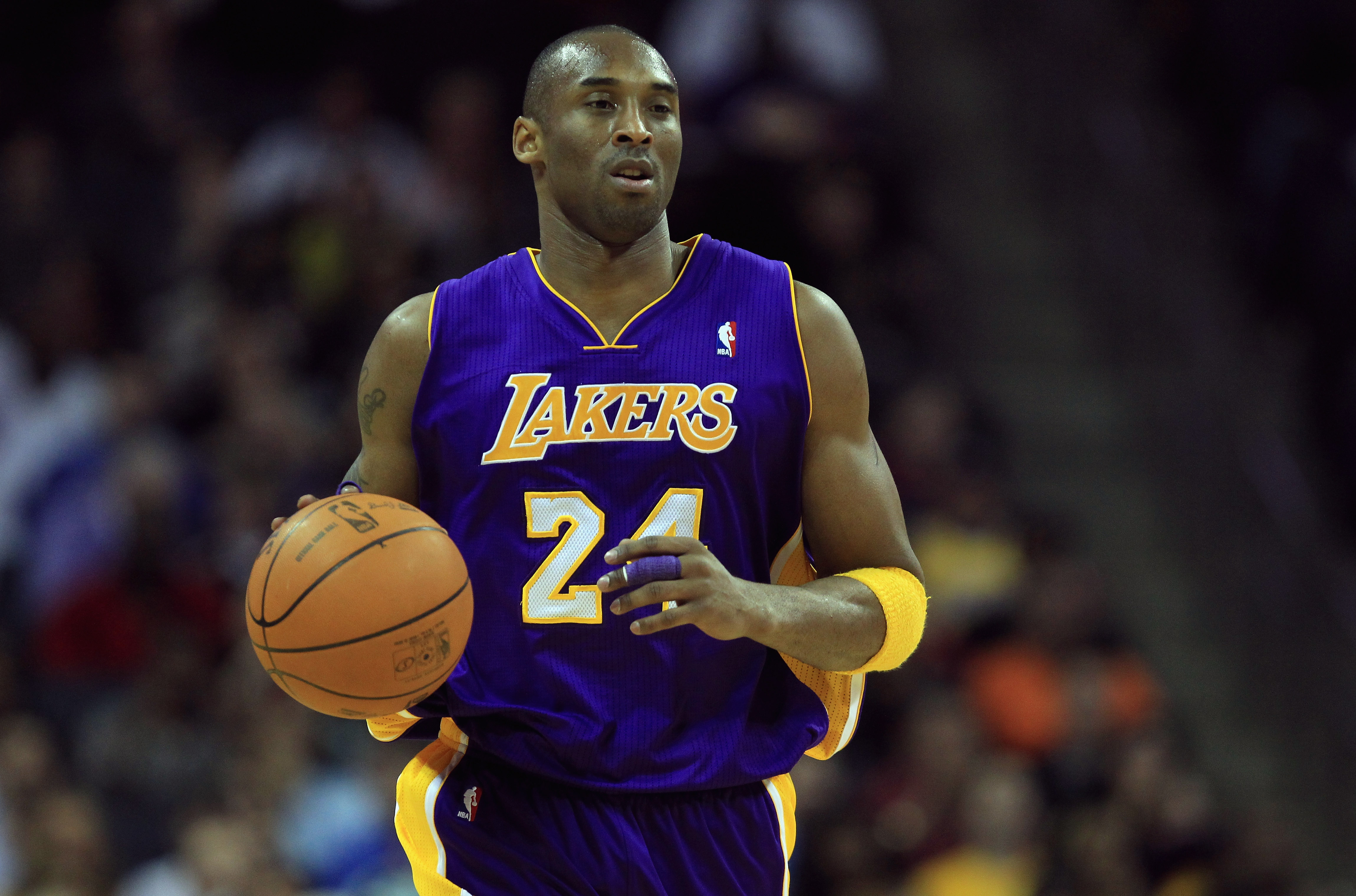
2000-01 to 2009-10 Accolades:
4x NBA Champion
1x NBA MVP
2x Finals MVP
2x Scoring Leader
8x All-NBA First Team
1x All-NBA Second Team
1x All-NBA Third Team
7x All-Defensive First Team
2x All-Defensive Second Team
10x All-Star
Kobe Bryant was the best shooting guard from 2000 through 2010, and despite the other great 2’s on our list, it wasn’t close. Bryant’s accolades speak for themselves. He won four titles, was named All-NBA First Team eight times, and made All-Defensive First Team seven times. Kobe’s two-way prominence has only been rivaled by Michael Jordan and LeBron James.
Kobe was the ultimate competitor. I could run through all his in-game heroics showing his I-hate-to-lose-more-than-anything-in-the-world spirit, but sometimes a single story, something that takes us from the macro to the micro, paints a better picture.
In the summer of 2005, little-known NBA player Laron Profit and his Lakers teammate Kwame Brown found themselves in a pick-up game versus Kobe Bryant in September. It was the game point, and Kobe had the ball dribbling up the court. Kwame knocked the ball away, and it rolled to half-court. Bryant sprinted after it, dove under Kwame’s legs, secured the rock and exploded past Brown for the clinching shot.
Think about that story for a second: Kobe Bryant, a three-time champion and the best player in the world, hated losing so much that he put his body on the line diving on the ground for a loose ball in a meaningless pick-up game.
That story pretty much sums up Kobe.
Bryant was a 6-6 wing, dripping with talent. Still, his work ethic, fearlessness, and competitive spirit set him apart and pushed him up our rankings as the best shooting guard during the first decade of the 21st century and second-best all-time behind only MJ.
2000 Through 2010 Was The Age Of The Shooting Guard
During the 60s, 70s, and 80s, superstar centers were vital to winning a title. In today’s version of the NBA, point guards and two-way wings rule. But, in the 90s and 00’s the shooting guard position was king.
Everything began with Michael Jordan. Then Kobe Bryant, Dwyane Wade, Allen Iverson, Tracy McGrady, Vince Carter, and the rest of the 2’s on our list picked up MJ’s flame and created a fire throughout the NBA.
Our group of shooting guards dominated from 2000 through 2010, helping their organizations hang banners while they piled up their own individual hardware. The turn of the 21st century was the glory days of the shooting guard.

